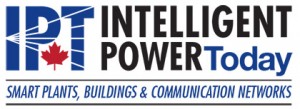Compatibility and Interoperability Issues in Ground Fault Protection Systems
Ground Fault Protection (GFP) systems are vital for safeguarding electrical systems from the hazards of leakage currents. They achieve this by detecting and interrupting circuits experiencing ground faults, where current diverts from its intended path and flows to earth (ground). However, ensuring compatibility and interoperability between different GFP systems and a diverse range of electrical equipment and standards presents significant challenges. This article explores the complexities of achieving seamless communication and functionality within a network of ground fault protection devices from various manufacturers.
Understanding Compatibility and Interoperability
Compatibility refers to the ability of ground fault protection systems to function seamlessly with existing electrical installations, while interoperability denotes the capability to work within diverse systems and protocols across various equipment and manufacturers.
Diverse Electrical Standards
Electrical standards can vary significantly between regions and manufacturers, leading to potential compatibility issues when integrating ground fault protection systems.
Varied Equipment Specifications
Differences in equipment specifications, such as voltage ratings, frequency, and operational characteristics, require ground fault protection systems to be versatile and adaptable.
Challenges in Ensuring Compatibility and Interoperability
Integrating ground fault protection systems into existing electrical networks is fraught with challenges that must be navigated to ensure safety and efficiency.
Manufacturer-Specific Protocols
Many manufacturers use proprietary protocols for their equipment, complicating the integration of third-party ground fault protection systems.
System Upgrade and Retrofitting Issues
Upgrading or retrofitting older installations with modern ground fault protection systems often reveals compatibility and interoperability issues, necessitating extensive modifications or custom solutions.
Technological Evolution
Rapid technological advances can outpace the standardization of ground fault protection systems, leading to mismatches between new technologies and existing installations.
Strategies for Addressing Compatibility and Interoperability
To overcome these challenges, specific strategies can be employed to enhance the compatibility and interoperability of ground fault protection systems.
Standardization and Certification
Promoting standardization and certification can help ensure that ground fault protection systems meet recognized standards and are more likely to be compatible and interoperable across different installations.
Modular and Flexible Design
Developing ground fault protection systems with modular and flexible designs allows for easier integration with various types of electrical equipment and systems.
Advanced Communication Interfaces
Incorporating advanced communication interfaces in ground fault protection systems can facilitate better interoperability with equipment from different manufacturers, supporting a range of communication protocols.
Benefits of Ensuring Compatibility and Interoperability
Ensuring that ground fault protection systems are compatible and interoperable with diverse electrical installations brings several benefits.
Enhanced Safety
Improved compatibility and interoperability contribute to more reliable ground fault protection, reducing the risk of electrical accidents and enhancing overall safety.
Cost-Effective Solutions
Systems that are designed to be compatible and interoperable with a wide range of installations can lead to cost savings by minimizing the need for custom solutions or extensive retrofitting.
Future-Proofing Installations
By focusing on compatibility and interoperability, ground fault protection systems can be more easily updated or expanded in the future, supporting evolving technological and safety standards.
Compatibility and interoperability issues in ground fault protection systems pose significant challenges but are crucial for ensuring effective electrical safety. By prioritizing these aspects through standardization, flexible design, and advanced communication technologies, it is possible to create ground fault protection systems that are safe, efficient, and capable of integrating seamlessly with a wide array of electrical equipment and systems. This holistic approach not only enhances safety but also offers economic and operational benefits, paving the way for more resilient and adaptable electrical infrastructures.
